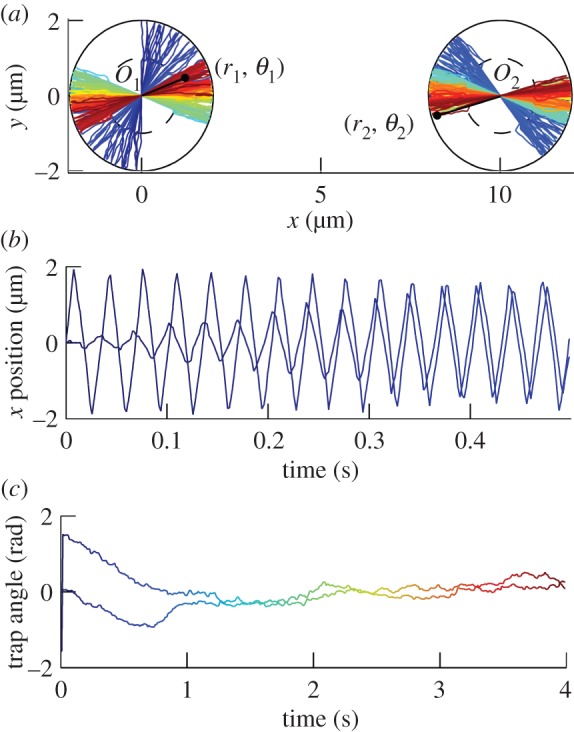Figure 2.

(a) Simulated tracks of two beads in oscillators centred on O1 and O2. The angular positions are coupled by the hydrodynamic interaction between the two beads, leading to alignment along x. (b) x-Position of the two beads. The positions oscillate and synchronize in a few cycles. The amplitude moves slowly because the positions with varying angles are projected along x. (c) Angle of the trap for each particle. The angle is plotted modulo π, in order to hide the effect of the traps' switches. The angles converge to 0, but with a much longer timescale than the synchronization timescale. In all the figures, unless explicitly specified, most of the parameters for simulations are matching typical cilia: d = 10 µm, a = 0.45 µm (see supplementary note in [40]), Rg = 2 µm, Rf = 1 µm, η = 1 mPa s−1, α = 0.7, T = 296 K and k is set such that the frequency of oscillations is 30 Hz (with no thermal fluctuations).
